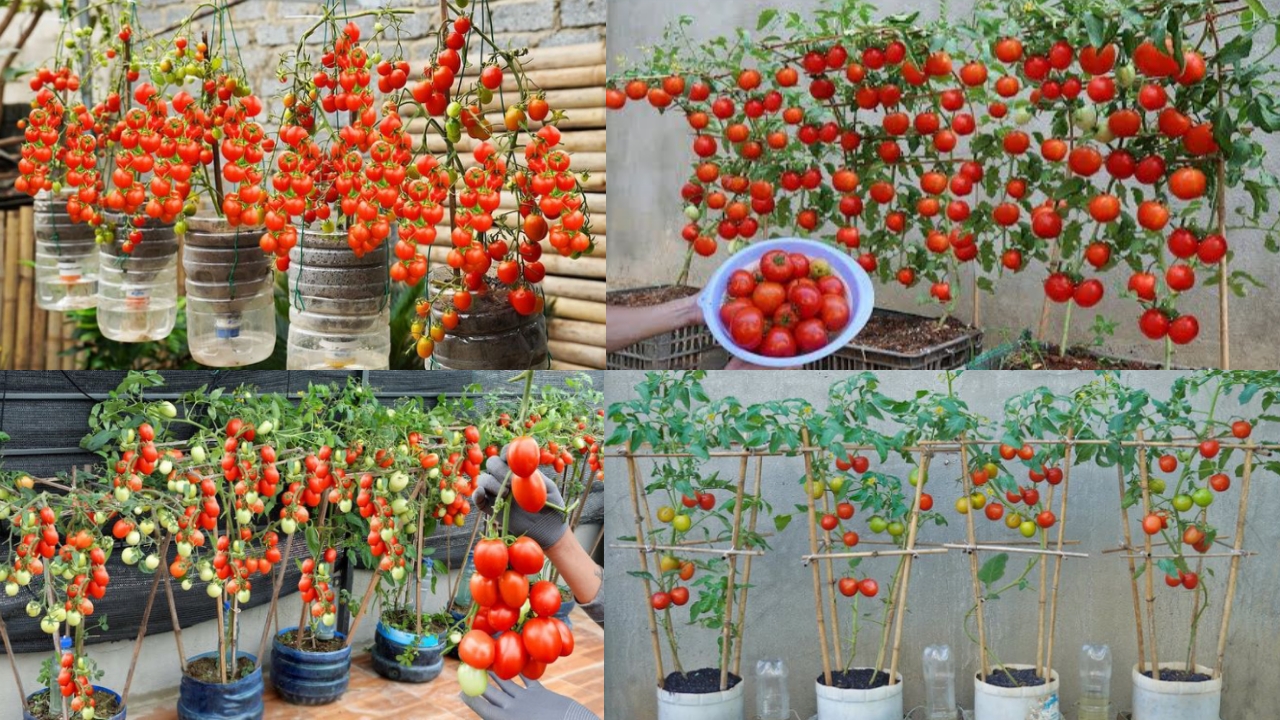Growing Large Tomatoes in Limited Spaces: Expert Tips Introduction: Gardening has become much more easier and simplified task like never be...
Growing Large Tomatoes in Limited Spaces: Expert Tips
Introduction:
Gardening has become much more easier and simplified task like never before. Having either short spaces or wanting to give a try to newly developed system of planting, one can generate massive income by simply growing Tomatoes in plastic bottles while harvesting in large amount with your little available space. In this article i will guide you on how to successfully grow Tomatoes at home through the use of plastic bottles, in addition i will reveal some home made effective fertilizers that will maximize your profit and save your cost of farming. i will try as much as possible to simplify the steps for easy understanding. Alright let's dive in!
Point 1: Selecting the Perfect Container
Selecting the type of container to use to very important, in fact your outcome totally relies on whether you make the right or wrong choice. Larger containers are recommended with a minimum soil capacity of 5 gallons, as this will provide an ideal environment for tomato plants. It is also important that the selected container has a proper drainage to prevent waterlogging, as tomatoes grow well in drained soil and grow poorly in excessive moisture.
Point 2: Choose the Ideal Tomato Varieties
While plenty of tomato varieties exists, not all are suitable for container gardening. Focus on determinate or bush tomato varieties, such as:
a. Patio
b. Tim
c. Balcony
These compact varieties naturally adapt to small spaces, making them ideal and suitable for container growth.
Point 3: Quality of Soil Mix for Containers
This is also an important step, as the quality of soil plays a key role in determining your success. Advisebly use a premium potting mix, to be specific, the one formulated for vegetables. These mixes provide essential nutrients while ensuring proper drainage. Alternatively, if you prefer to do it by yourself, you can enrich the potting soil by combining it with equal parts of compost, creating a nutrient rich blend.
Point 4: Planting Your Tomato Seedlings
Choose a location for your container that receives a minimum of 6-8 hours of sunlight everyday. Tomatoes grow in sunlight, and maximizing their exposure will contribute to their well growth.
Some Effective Homemade Fertilizers as i Promised Earlier
To encourage the growth of large, fleshy tomatoes, consider using these homemade fertilizers
1. Banana Peel Fertilizer:
Tomato plants are in high demand of potassium, which was found to be abundant in banana peels. Chop up the peels and bury them approximately 2 inches deep into the soil near your tomato plants. While decomposing, gradually potassium is release, thereby nourishing the plants.
2. Eggshell Calcium Boost:
You will first crushed the eggshells, it is a good source of calcium and can be use to supplement the soil with calcium, which is a vital nutrient that helps prevent blossom end rot. Rinse and crush the eggshells, then sprinkle them around the roots of your tomato plants.
3. Salt Solution:
For healthy leafage and optimal fruit development, dissolve 1-2 tablespoons of Epsom salt in a gallon of water. Use this solution as a foliar spray for your tomato plants to have increased magnesium levels.
Watering and Pruning Procedure
Maintaining consistent soil moisture is very important, but one must be very careful not to overwater the plants which will result in waterlogging. Aim for approximately 1-2 inches of water per week, adjusting as necessary based on the weather conditions. You can regularly check the moisture levels by inserting your finger into the soil. Additionally, pruning your tomato plants can redirect their energy towards fruit production, reducing excessive foliage.
Support and Stake Your Plants
As your tomato plants grow, they may require support or stakes to prevent them from bending and eventually rotting. This is especially important for varieties that bear heavy fruits. You can employ the use of tomato cages or stakes to provide the necessary support, and ensure that your plants remain upright and healthy.
Harvesting Duration of Tomatoes:
Normally, tomatoes ripen within a timeframe of 60-85 days after planting. Once they reach the desired color and exhibit a slight give when gently squeezed, they are ready to be harvested.
I hope you find this article helpful, thanks for reading.










No comments